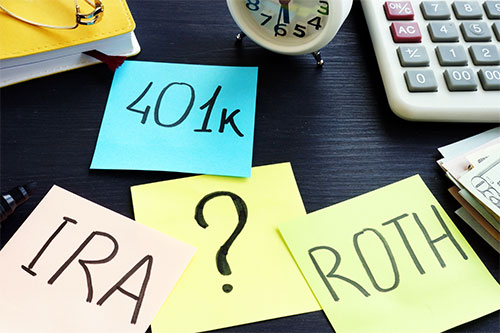The Self-Directed 401(k) and IRA Explained
The employer sponsored 401(k) and the IRA, Individual Retirement Account are immensely popular tax-advantaged retirement accounts in the U.S. The standard versions of these accounts allow the investor limited choices for investment in stocks, bonds, ETFs, and mutual funds. For most account holders these are acceptable choices. For those who have more experience or who want to invest in other asset types, they want options that allow more control on their parti.
Key Characteristics of the Self-Directed Retirement Account
The self-directed IRA or 401(k) account offers these key differences:
- The investor has control over buy and sell decisions.
- Investments in alternative assets like precious metals, real estate, cryptocurrencies, choices not allowed in other account types.
- This account type requires more investing experience and confidence, as well as more attention and management.
While the alternative investment choices above are the most common, there are many other options available in most self-directed accounts, including:
- Tax lien certificates
- Promissory notes
- Development land
- Water rights
- Mineral rights
- Oil and gas
- LLC membership interest
- Livestock
There is a list of specific investments not included, such as antiques, stamps, art, rugs, and collectibles.
Who is Best Suited for a Self-Directed IRA?
While the investor makes buy and sell decisions, the account is held by a custodian who holds the assets and executes the buy and sell transactions. Reasons why a self-directed account could be a fit for an investor include:
- Diversification of asset types. Moving some funds from a standard account to a self-directed account would allow the investor to diversify into other asset types for risk and reward reasons.
- Those who have taken losses in stock market gyrations and want more control.
- Some investors have high interest in or experience with certain asset types, such as real estate, precious metals, or cryptocurrencies.
Because the self-directed accounts have all the tax advantages of regular account types, the investor with specific interests can take greater control of their financial goals.
How the Self-Directed Account Works
For the self-directed IRA, the custodian is chosen by the investor. It is usually a brokerage or investment firm. With an employer sponsored 401(k), the custodian would also be the plan administrator. The same contribution and withdrawal limits apply as for traditional accounts. RMDs, Required Minimum Distributions, begin at age 70&1/2 through the 2019 tax year, with the age extended to 72.5 beginning in 2020.
For the Roth account, the rules are mostly the same except that there are no required minimum distributions at any age. Contributions are after-tax, so distributions at any age are not taxable.
Checkbook Control of Self-Directed IRAs
The option of setting up a Checkbook IRA appeals to those investors who will have many transactions, such as those involved in managing rental properties. To keep fees lower, the custodian is not required to make all dispersals. Instead, the account owner manages the commercial type of bank account to handle disbursements allowed by the account rules.
When it comes to the rules, they are critical when it comes to checkbook accounts. Mishandling transactions or making prohibited transactions can result in revocation of tax-advantaged status.
i The Self-Directed 401(k) and IRA – Investopedia.com

